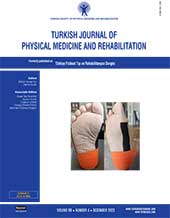Analysis of patients with adhesive capsulitis after COVID-19 vaccination: An observational study
Patients and methods: In this observational study, 21 patients (11 males, 10 females; mean age: 60.7±7.3 years; range, 45 to 70 years) with incipient shoulder pain and limitation diagnosed with adhesive capsulitis due to SIRVA were evaluated between June 2021 and December 2022. Demographic and clinical data of the patients were recorded. Pain was evaluated with the Visual Analog Scale (VAS). The passive range of motion (ROM) of the affected shoulder was measured by a goniometer. The applied treatment methods (medical treatment, physical therapy, intraarticular steroid injection, hydrodilatation, and suprascapular nerve block) were recorded. The patients were called in for control two months later. Visual Analog Scale scores and passive shoulder ROMs were reevaluated.
Results: Symptoms started after the second dose in nine (42.9%) patients. The mean time between vaccination and onset of complaints was 8.0±6.4 days. Sinovac vaccine was administered to eight patients, BioNTech vaccine was administered to five patients, and Sinovac+BioNTech vaccine was administered to eight patients. Baseline to control ROM angle changes were 128.8±30.4º to 155.0±20.6° for flexion, 117.1±37.8° to 147.1±26.4° for abduction, 45.9±17.8° to 61.9±12.6° for internal rotation, and 43.4±21.9° to 56.3±18.3° for external rotation, respectively. The mean VAS scores were 7.0±1.2 (5-9) at baseline and 2.7±1.0 (1-5) at the control. There was a statistically significant difference between the baseline and control (two months after treatment) in terms of VAS scores and ROM angles (p<0.001).
Conclusion: Clinicians should be aware of adhesive capsulitis following vaccine administration since a significant improvement can be obtained by proper treatment for SIRVA.
Keywords : Adhesive capsulitis, COVID-19, shoulder, SIRVA, vaccine
















